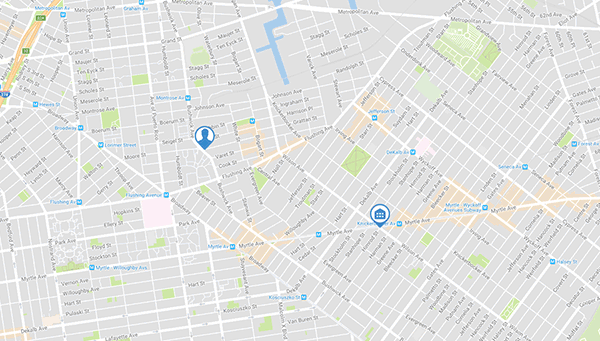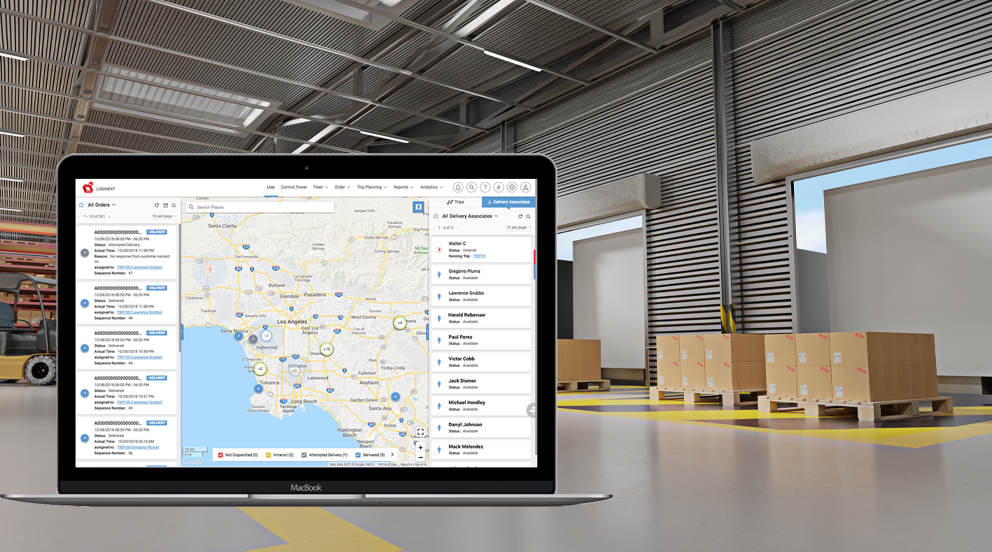Last Mile Deliveries and Route Optimization: The Complete Guide
Last mile delivery is the final step of a product’s movement from a warehouse or inventory to the customer’s doorstep. Even before ecommerce was widely popular, last mile delivery was an integral part of the logistics operations in numerous businesses. Especially in supply chain management, the success of last mile delivery has been efficient route planning and route management for the movement of goods.
With efficient route optimization, first mile and last mile delivery has become a shining beacon of hope for the logistics and transportation of every business worldwide. From individual retailers to large-scale corporate logistics, an efficient logistics software framework is skyrocketing productivity and profitability.
Realizing the potential of a well-organized logistics software
Today, more retailers offer door-to-door shipping and last mile delivery solutions for customers. Even in B2B product exchanges, last mile delivery and delivery associate management is crucial to the overall function of a logistics chain. As newer technologies came into the picture, businesses began to employ advanced Delivery Routing Software, real time tracking systems, and the best ETA calculations to ensure that every order was fulfilled on time. Especially in the age of instant gratification, customers expect their online purchases to be delivered quickly.
This demand has resulted in developing a robust software framework to tackle the many challenges faced in logistics. While tools like Google Maps can give one routes for say up to 10 stops, anything over that requires significantly higher computational power for which advanced algorithms are required.
Hence, a robust framework for last mile delivery and transportation management systems are required for business operations. If logistics operations do not have an efficient route optimization for their fleet, they cannot maximize on the efficiency required to run multiple operations simultaneously. Despite having many orders and multiple fleets of transportation, companies can only benefit to the fullest with a streamlined transportation management system.
High demand for a robust logistics framework
To introduce a robust framework trusted by top businesses worldwide, LogiNext’s Mile Platform provides automated and improved functionality of logistics in business. With an advanced capacity to accommodate numerous routes in real-time, using GPS tracking, real-time analytics, and route optimization among other friendly features, LogiNext is the most powerful logistics management system for businesses.
We have put together a comprehensive guide to best last mile delivery software and route optimization so that businesses can always stay ahead of the game with efficient management of their operations.

The evolution of last mile delivery
The route optimization and last mile delivery options available until recently were not enough for businesses to scale up and meet the rising demands of their industry. This is an extremely complicated problem which has to be solved at scale.
The pandemic gave innovative solutions a push and more and more industries began to invest in a logistics software framework. The overall efficiency of a company rose by a significant margin. Professionals in the supply chain could focus on their jobs better.
As the customer expectations involve same-day deliveries, delivery in time slots, ease of returns, accurate ETA communication, vaccination of driver associates (safety norms) and other demands, a concrete solution became vital to business performance.
Last mile delivery has become crucial to the supply chain business, more than ever before. 20 years ago, goods were shipped across the world, taking anywhere between 6-8 weeks for order fulfillment. However, with the rise of competition between ecommerce companies, the internet has redefined the patience of the average consumer.

Nobody nowadays would wait that long for a product to be delivered. Online sales are increasing by the day and order fulfillment is very important for continued business. Hence, last mile delivery solutions have evolved with the demands of modern business, with technologies like GPS tracking, routing software, inventory syncing, delivery associate management and statistics to assess the real-time status of every shipment.
When an order is shipped out to a customer, the details of the order are available in real-time with automated status updates reaching the customer about the movement of purchased goods. Similarly, businesses can keep any eye on their logistics operations with integrated tools that monitor the performance of their logistics chain.
Let’s explore how the features of LogiNext All Mile Transportation Automation platform employ high-end technology to track, manage and deploy large-scale logistics.

Fleet management made easy
Fleet management has become easier, as the transportation of goods has become safer and quicker. A network of fleets and transportation can be managed centrally, where GPS tracking and SLA compliance ensure that every person on duty is meeting the business demands. Real-time data allows headquarters to plan their logistics operations accordingly. The performance of individual transportation and a network of vehicles can be assessed simultaneously.
Advanced Route Optimization
WIth a route planning software, logistics can be streamlined to unlock maximum efficiency in the supply chain. Selecting ideal routes to avoid congestion and save fuel can save costs on every delivery. Similarly, reaching the most remote corners of the globe is easier with routing software. Live GPS tracking informs the company of the status of each order, with live statistics to improve the performance with every order.
Thereby, businesses save time, costs and resources on fulfilling orders, which in turn boosts the productivity of their logistics operations. When customers and businesses require the best ETA calculation to make informed decisions, route planning and live tracking keeps all the stakeholders well-informed of the logistics operations.
There are numerous features of a route planning and logistics management platform embedded into the highly scalable LogiNext All Mile Transportation Automation platform. Lets dive into some distinct features of the innovative technologies.
-
Live screen & control tower
Built for end-to-end visibility, every step of the logistics chain uses a real-time tracking system for real-time data. With secure access to the admin controls, companies can dedicate the adequate resources to match the demands of their supply chain. A fleet can be deployed to areas with the highest number of orders coming in, offering last mile delivery solutions effectively.
Similarly, live statistics about each asset can provide the company with accurate information about their product movement. In the case of a canceled order, drivers, technicians and logistics operators are updated through a system in real-time, saving costs, time and energy. Similarly, shipments of multiple products become easier with efficient routing software integrated with data-driven insights that boost the overall efficiency of each logistics operation.
-
Responsive design & cloud integration
Another advanced aspect of LogiNext solutions is the responsive design, built for the mobile age that offers remote access and custom applications for an efficient transportation management system. With cloud integration, all the data is securely stored and safe from cyber threats. Logistics operations can be conducted with ease, using high-performance big data handling and responsive user-friendliness. Additionally, the LogiNext framework is built to handle heavy loads and offers a simplistic interface for professional use.
-
High scalability
As mentioned the robust framework allows for thousands of routes, billions of location data points and countless orders to be managed simultaneously. With highly scalable resources at disposal, businesses can make optimum use of their logistics infrastructure and automate many processes that would require intense labor. In turn, companies can manage all their assets in one place with qualified metrics to assess the overall functionality of every single operation involved in their supply chain.
-
Customer experiences enhanced
By offering seamless functionality and user-friendly tools, LogiNext makes it easy for operation managers on the dashboard, drivers using a custom app, accountants assessing the monetary value and associates dealing with customers to use the many features of a logistics automation framework. By offering the end consumer updates, alerts and notifications, the B2C interaction and B2B interaction is enriched with the best customer experiences.
-
Agile & futuristic framework
The most advantageous impact of LogiNext solutions from first mile delivery to last mile delivery is the powerful engine that automates logistics management with increased efficiency. It’s high-scalability allows for businesses to increase their reach in the market and progress with the latest technologies. An AI algorithm with configurations for different use cases allows for the LogiNext transportation automation system to be integrated with diverse industry verticals. From CEP industry, eCommerce, retail, QSR chains and transportation services, powerful technology can transform the overall infrastructure without having to make any significant changes to the existing assets. Constantly improving your business with each delivery, the LogiNext engine is built to equip your business with the rising demands of a technologically advanced future of business and transportation.
Transportation automation is the future
With the advancements in route planning, constant updates on real-time tracking systems and integrated transportation automation, businesses can leverage the numerous benefits of a first to last mile delivery solution. As the increased stake of automation is reinventing the way global trade occurs, companies are catching up to the requirements of the future.
Modern businesses require a robust logistics framework to optimize their operations and fulfill market demands. Additionally, Machine Learning and Artificial Intelligence is being used to the best potential, to streamline workflow and build a more data-driven logistics infrastructure. From drop shipping and drone deliveries, to third-party logistics and doorstep product demos, the world is becoming a smaller place and transportation technology is the main reason.
Conclusion
As we connect the dots with the future, AI-powered automation systems can benefit the overall structure of logistics worldwide, making a faster, more robust and efficient supply chain that has already begun to offer better customer experience with affordable services and world-class products from any corner of the world.
LogiNext is determined to share this piece of the future, by assuring that your logistics are in safe hands. Through efficient route optimization and real-time data analytics, businesses can make a more informed decision about their logistics operations, saving costs and increasing productivity by a large margin.








@LogiNext